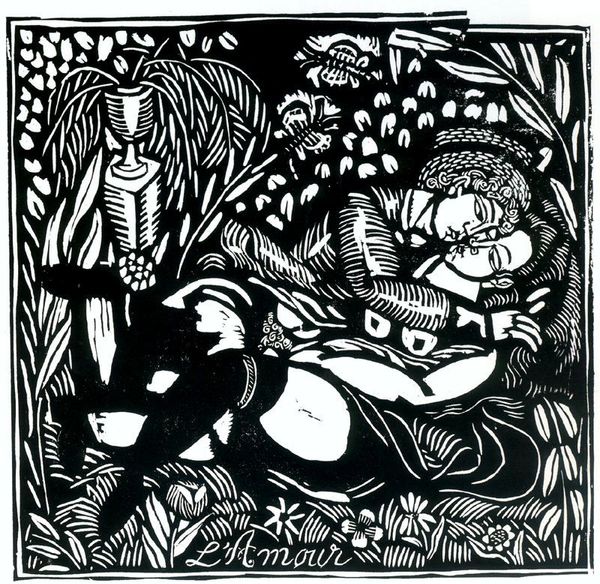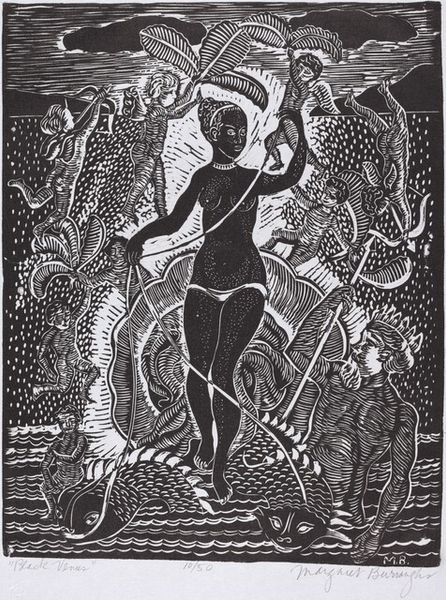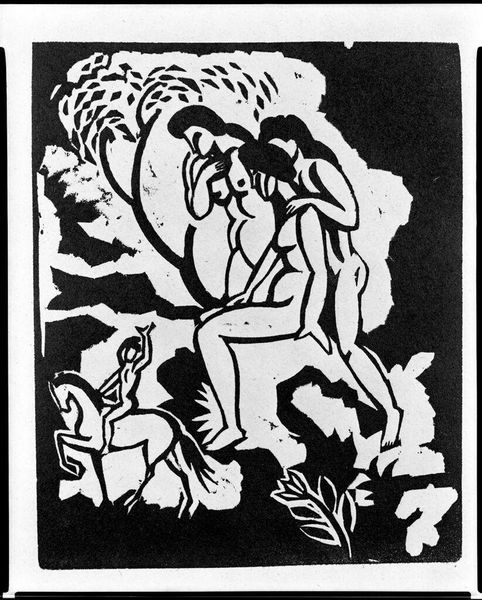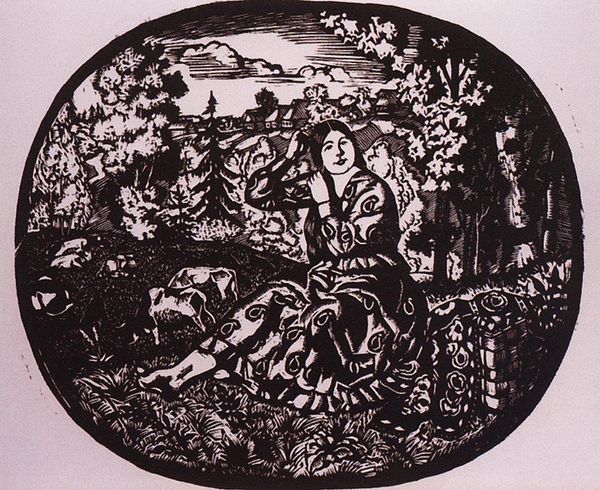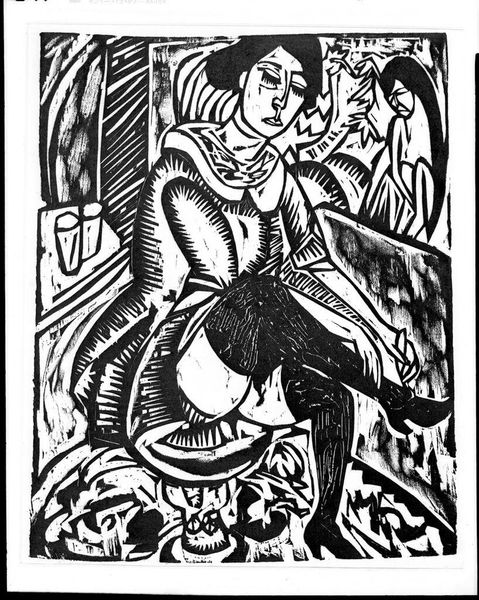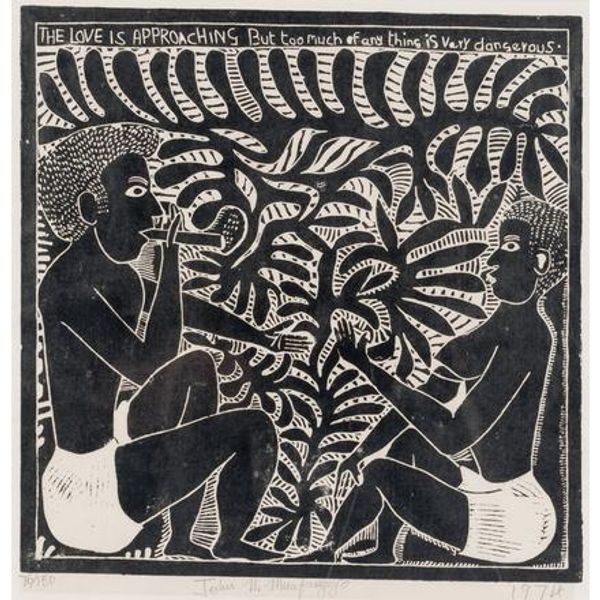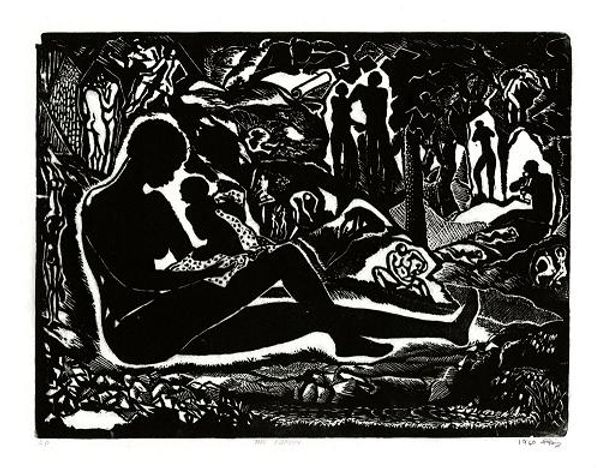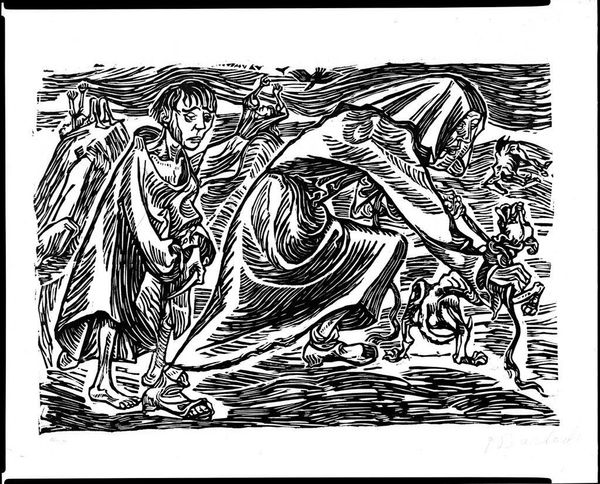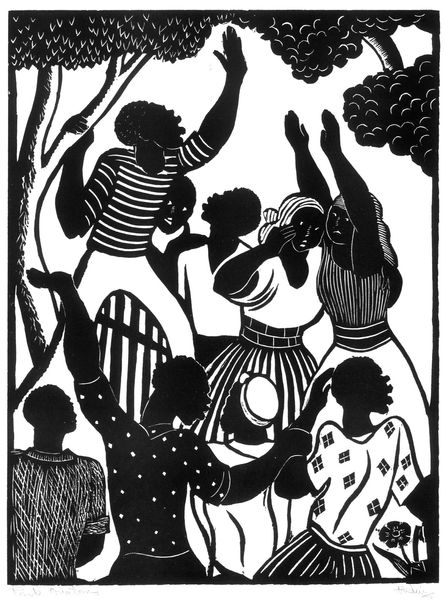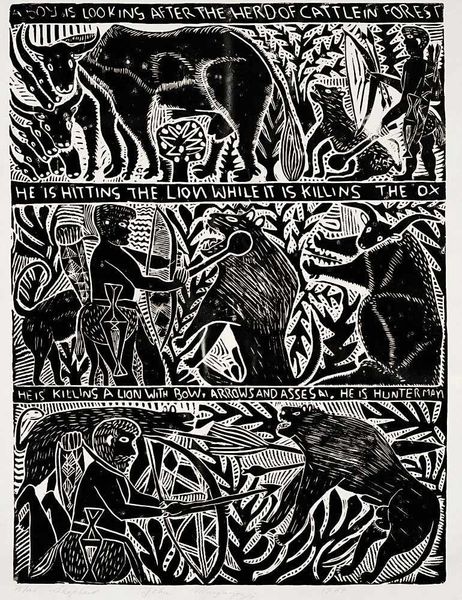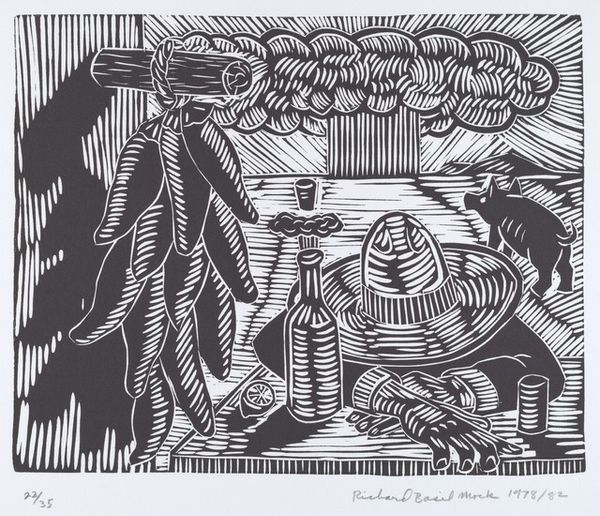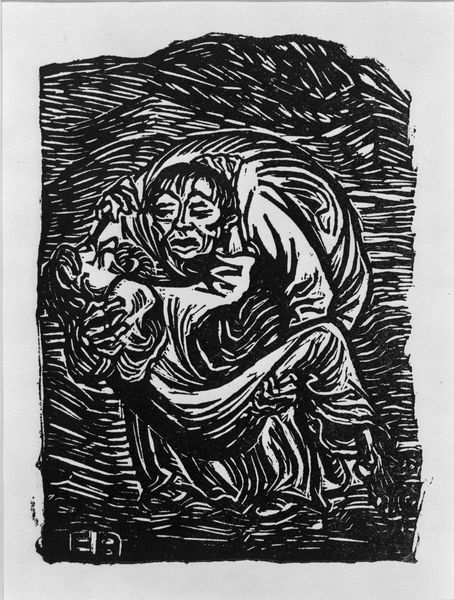
print, woodcut
#
art-nouveau
#
narrative-art
# print
#
landscape
#
figuration
#
woodcut
Dimensions: 30.5 x 31 cm
Copyright: Public domain US
Curator: Dufy’s 1910 woodcut, "The Pleasures of Peace: Dance," strikes me immediately with its dynamic contrasts—it’s like a midnight tropical fever dream pressed onto paper. What do you see? Editor: It's arresting, isn’t it? I see a celebration of labor, both in its depiction—the dance, the seafaring—and its very making. Look at the dense composition, so graphic—clearly woodcut, given that powerful push-and-pull between the black ink and the exposed white of the paper. Curator: Oh, yes. The textures are everything. It's interesting how Dufy suggests volume with just a few gouges. And this feeling of journey—the title pulls you in, right? Do we have voyagers dancing or dancers voyaging? I imagine both at once. It feels like a waking dream. Editor: Exactly! And woodcut being relatively cheap and accessible compared to other mediums at the time made images like this readily available. We must recognize that while artists create narratives, sometimes celebratory and sometimes challenging, material processes influence how those messages were broadly received in culture. I'm also reminded that this wasn't always considered ‘fine’ art. Curator: Right, these weren't luxury commodities so much as…tools? Tools to explore fantasies, stories, cultural desires—in a really material way. It does remind us how intertwined art and craft can be, these tools giving way to art as such... Do you notice the way that everything here seems caught up in rhythmic movements: the swaying palms, the dancing figures. It speaks of cultural fusion... of dance bringing about new perspectives. Editor: Indeed! The choice of wood as the material also speaks to cultural contexts, both the origin of woodcuts and perhaps a conscious choice reflecting those landscapes of the isles that these figures move through. To me, it reinforces Dufy's commentary on production itself. The print is not divorced from the context of its making but entirely bound to it! Curator: In a way it is beautiful. I am struck again at just how evocative it can be: the whole colonial narrative playing out in these dancers with an embracing style. Editor: Agreed! The dialogue of its making is complex and profound... It really speaks. Curator: Exactly; let's consider how everything in life emerges together from simple, striking origins...
Comments
No comments
Be the first to comment and join the conversation on the ultimate creative platform.
